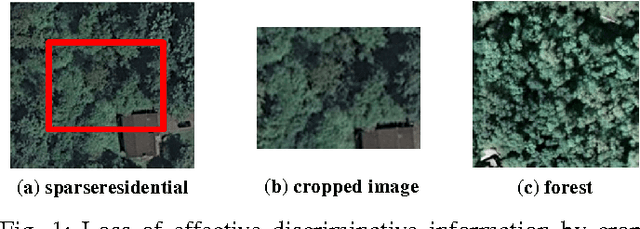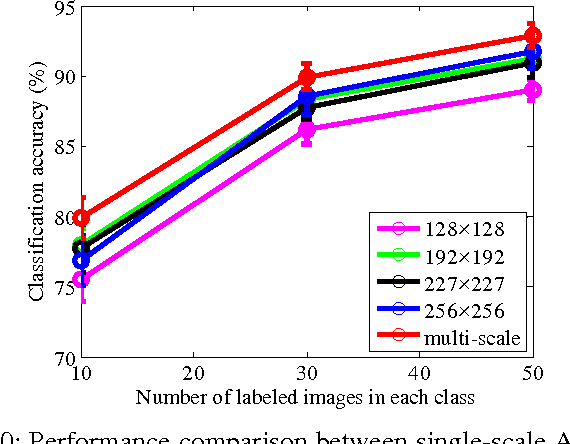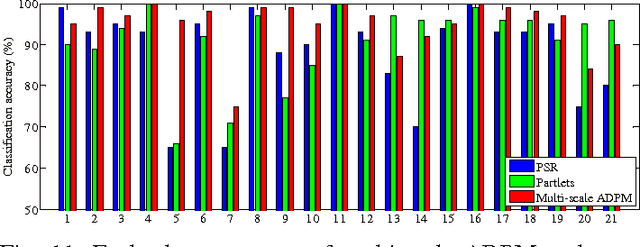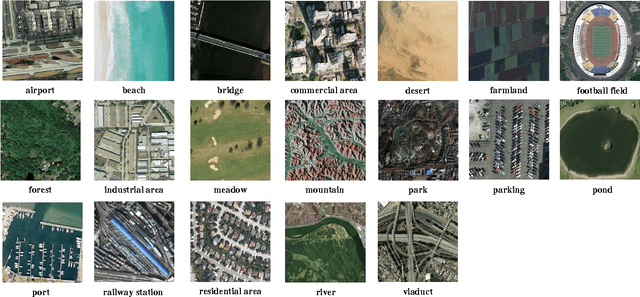Javier Plaza
Senior Member, IEEE
Adaptive Deep Pyramid Matching for Remote Sensing Scene Classification
Nov 11, 2016



Abstract:Convolutional neural networks (CNNs) have attracted increasing attention in the remote sensing community. Most CNNs only take the last fully-connected layers as features for the classification of remotely sensed images, discarding the other convolutional layer features which may also be helpful for classification purposes. In this paper, we propose a new adaptive deep pyramid matching (ADPM) model that takes advantage of the features from all of the convolutional layers for remote sensing image classification. To this end, the optimal fusing weights for different convolutional layers are learned from the data itself. In remotely sensed scenes, the objects of interest exhibit different scales in distinct scenes, and even a single scene may contain objects with different sizes. To address this issue, we select the CNN with spatial pyramid pooling (SPP-net) as the basic deep network, and further construct a multi-scale ADPM model to learn complementary information from multi-scale images. Our experiments have been conducted using two widely used remote sensing image databases, and the results show that the proposed method significantly improves the performance when compared to other state-of-the-art methods.
 Add to Chrome
Add to Chrome Add to Firefox
Add to Firefox Add to Edge
Add to Edge